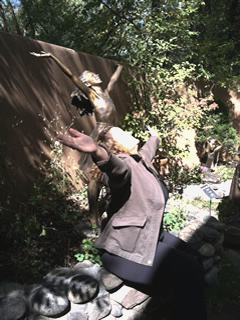
Two friends, Vicki and Naomi walk to their cars after having had dinner together. They work together and have known each other since kindergarten. Naomi wanted to get together to share her good news. Not only had she received a promotion and a substantial raise, but she had just gotten engaged. Vicki tried to be happy for her friend, but inside she was consumed with envy and resentment. Her mind was racing with thoughts about how unfair life had been to her.
This is an example of just one of the situations that Yoga Sutra I.33 speaks to, as it addresses how to maintain a stable, tranquil mind in relationships. This Sutra is translated: “A clear and tranquil mind results from cultivating friendliness towards those who are happy, compassion towards those who suffer, joy towards the virtuous, and impartiality towards wrong-doers.”1
Vicki, in the example above, is seeing the happiness of her friend through the lens of what she feels she is missing in her own life. Her thinking has become negative, and she is suffering, as a result. This Sutra advises us, instead, to see the happiness of others as just that. By being friendly towards those who are happy we share in their positive experience. Our minds remain tranquil.
Actually each of the four situations mentioned in this Sutra share a common thread. What keeps a person’s mind ensnared in negativity is seeing other people’s lives through the lens of one’s own life, experiences, or values.
Let’s look at another example. Jean is 26 and recently divorced after an abusive marriage. As a result she asked to move into her parents’ home with her 1 year old. Neither her father nor mother liked the man Jean had married. They told her it was her choice to marry him, and now she has to live with the consequences. Without their help or a job, Jean and her baby are living in a shelter. Jean is obviously suffering from her failed, abusive marriage and lack of resources. Yet, anger and blame cloud her parents’ minds and close their hearts to her suffering. Sutra 1.33 advises us to cultivate compassion, a sympathetic consciousness, of another’s suffering. Our mind, then, remains stable and calm.
When faced with someone doing things that are wrong or harmful, this Sutra advises impartiality toward someone acting poorly. Many of us might stop at this and ask if this means ignoring someone’s harmful behavior.
I don’t think so. Yoga is about cultivating responsible, thoughtful action based upon seeing clearly what is in front of us. This part of the Sutra, I believe, directs us to withhold judgment about behavior because we cannot know the whole story behind it.
In Ferguson, Missouri this week, protests have turned violent following the shooting and death of Michael Brown, a young, unarmed, African-American man, by a white policeman. His death is being investigated, and the violence in response has been condemned.
Yet, we do not know the whole story. We can be disturbed and angry judging the behavior of the white policeman. We can condemn the behavior of African-American crowds angry over another case of police violence seemingly based on race. But, to be impartial means we don’t take events personally. We have to take more into account than just our own ideas and beliefs. And, we need “to understand that there are compulsions…which cause them [wrong-doers] to act as they do.” For that we need sympathy and understanding as well.
1Translation from The Wisdom of Patanjali’s Yoga Sutras, by Ravi Ravindra
 Yoga identifies five dimensions in our human system: the physical or annamaya, the energetic or pranamaya, the intellect or manomaya, the personality or vijnanamaya, and the emotional or anandamaya. The word ananda, in the emotional dimension, is translated as “joy that never stops.” This level of our system is capable of joy because it is not linked to habitual ways of thinking that cause suffering.
Yoga identifies five dimensions in our human system: the physical or annamaya, the energetic or pranamaya, the intellect or manomaya, the personality or vijnanamaya, and the emotional or anandamaya. The word ananda, in the emotional dimension, is translated as “joy that never stops.” This level of our system is capable of joy because it is not linked to habitual ways of thinking that cause suffering. 


 Pranayama is the conscious regulation of the breath. Considered one of the most powerful tools to purify and discipline the body and mind, it is a subtle practice. To benefit, a practitioner should be knowledgeable in the application of pranayama as its misuse can create harm. That is why pranayama should be learned with the guidance of teacher skilled in its practice.
Pranayama is the conscious regulation of the breath. Considered one of the most powerful tools to purify and discipline the body and mind, it is a subtle practice. To benefit, a practitioner should be knowledgeable in the application of pranayama as its misuse can create harm. That is why pranayama should be learned with the guidance of teacher skilled in its practice. Visualization can be a powerful tool of yoga, especially when the visualization focuses on an object in nature. One of the most revered objects of visualization and meditation in yoga is the sun.
Visualization can be a powerful tool of yoga, especially when the visualization focuses on an object in nature. One of the most revered objects of visualization and meditation in yoga is the sun. 
 Today at my family’s Labor Day picnic, my niece, an avid gardener, showed me a tomato-devouring hornworm. Bright green, about three inches long, and fat from having feasted on my brother-in-laws tomato plant. He was big enough to see even the detail of his mouth and the aphids that had taken up residence as parasites. I loved seeing him in all his brilliant green detail even while hoping my tomatoes would escape his attentions.
Today at my family’s Labor Day picnic, my niece, an avid gardener, showed me a tomato-devouring hornworm. Bright green, about three inches long, and fat from having feasted on my brother-in-laws tomato plant. He was big enough to see even the detail of his mouth and the aphids that had taken up residence as parasites. I loved seeing him in all his brilliant green detail even while hoping my tomatoes would escape his attentions.